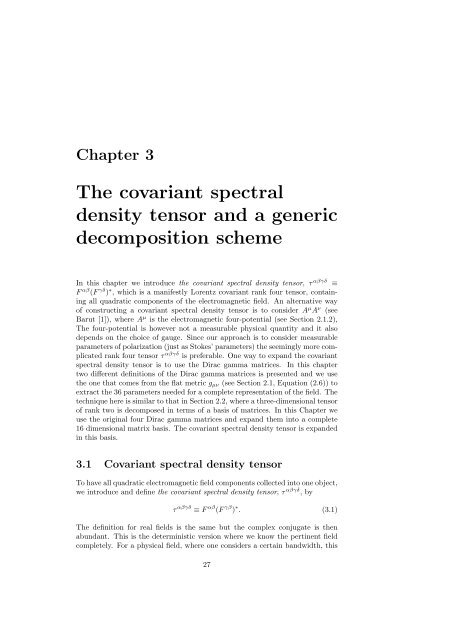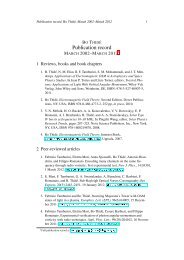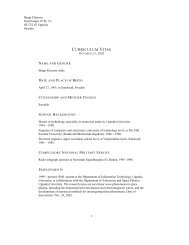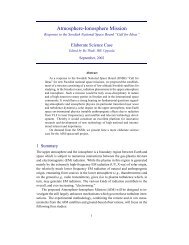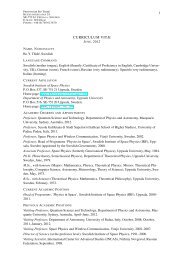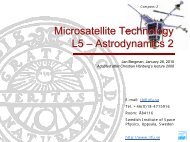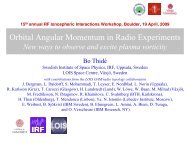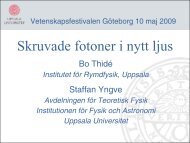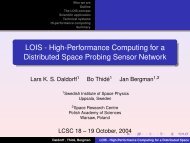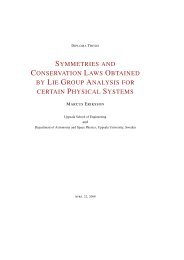Towards a covariant formulation of electromagnetic wave polarization
Towards a covariant formulation of electromagnetic wave polarization
Towards a covariant formulation of electromagnetic wave polarization
Create successful ePaper yourself
Turn your PDF publications into a flip-book with our unique Google optimized e-Paper software.
Chapter 3<br />
The <strong>covariant</strong> spectral<br />
density tensor and a generic<br />
decomposition scheme<br />
In this chapter we introduce the <strong>covariant</strong> spectral density tensor, τ αβγδ ≡<br />
F αβ (F γδ ) ∗ , which is a manifestly Lorentz <strong>covariant</strong> rank four tensor, containing<br />
all quadratic components <strong>of</strong> the <strong>electromagnetic</strong> field. An alternative way<br />
<strong>of</strong> constructing a <strong>covariant</strong> spectral density tensor is to consider A µ A ν (see<br />
Barut [1]), where A µ is the <strong>electromagnetic</strong> four-potential (see Section 2.1.2),<br />
The four-potential is however not a measurable physical quantity and it also<br />
depends on the choice <strong>of</strong> gauge. Since our approach is to consider measurable<br />
parameters <strong>of</strong> <strong>polarization</strong> (just as Stokes’ parameters) the seemingly more complicated<br />
rank four tensor τ αβγδ is preferable. One way to expand the <strong>covariant</strong><br />
spectral density tensor is to use the Dirac gamma matrices. In this chapter<br />
two different definitions <strong>of</strong> the Dirac gamma matrices is presented and we use<br />
the one that comes from the flat metric g µν (see Section 2.1, Equation (2.6)) to<br />
extract the 36 parameters needed for a complete representation <strong>of</strong> the field. The<br />
technique here is similar to that in Section 2.2, where a three-dimensional tensor<br />
<strong>of</strong> rank two is decomposed in terms <strong>of</strong> a basis <strong>of</strong> matrices. In this Chapter we<br />
use the original four Dirac gamma matrices and expand them into a complete<br />
16 dimensional matrix basis. The <strong>covariant</strong> spectral density tensor is expanded<br />
in this basis.<br />
3.1 Covariant spectral density tensor<br />
To have all quadratic <strong>electromagnetic</strong> field components collected into one object,<br />
we introduce and define the <strong>covariant</strong> spectral density tensor, τ αβγδ , by<br />
τ αβγδ ≡ F αβ (F γβ ) ∗ . (3.1)<br />
The definition for real fields is the same but the complex conjugate is then<br />
abundant. This is the deterministic version where we know the pertinent field<br />
completely. For a physical field, where one considers a certain bandwidth, this<br />
27


